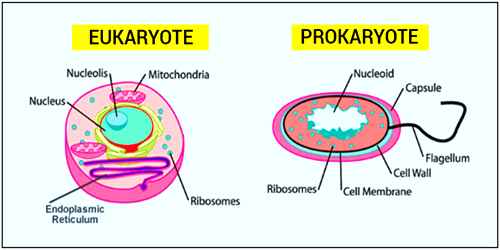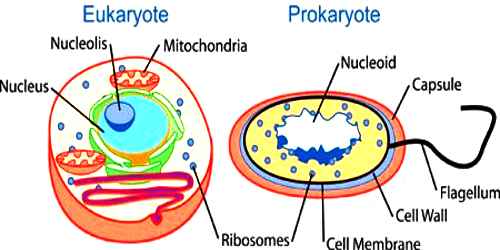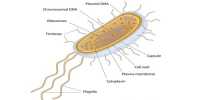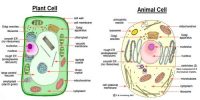Those who have life are living beings. Microorganisms, Plants and Animals have life, so they all are living beings. Cells are considered the fundamental units of life in the division because they come in detached and simply identifiable packages.
Nature of Living Cell on the basis of Nuclear Structure:
Prokaryotie cell or Proto cell: Nucleus is not well prearranged in these cells; nuclear membrane and nucleolus are absent here. In these cells, Chromosome encloses only DNA. Usually, no other organelles are present apart from the Ribosome. Cell division happens here through Amitosis procedure. Prokaryotes are very plain, single-celled organisms, without internal compartments and are typically bounded by a cell wall. What is most significant about them is that they do not have a nucleus, hence the name prokaryote (pro = before; kary = nucleus).

Eukaryotic cell or Eucell: There is the well-organized nucleus in these cells with membrane and nucleolus. The chromosome contains DNA, proteins Chloroplasts, Mitochondria and other organelles. Cell division happens through mitosis process. Eukaryotic cells are larger than prokaryotic cells, they have inner compartments called organelles, they have a nucleus and have the ability to form multicellular structures. It was from the first eukaryotic cells that all multicellular life has evolved.














